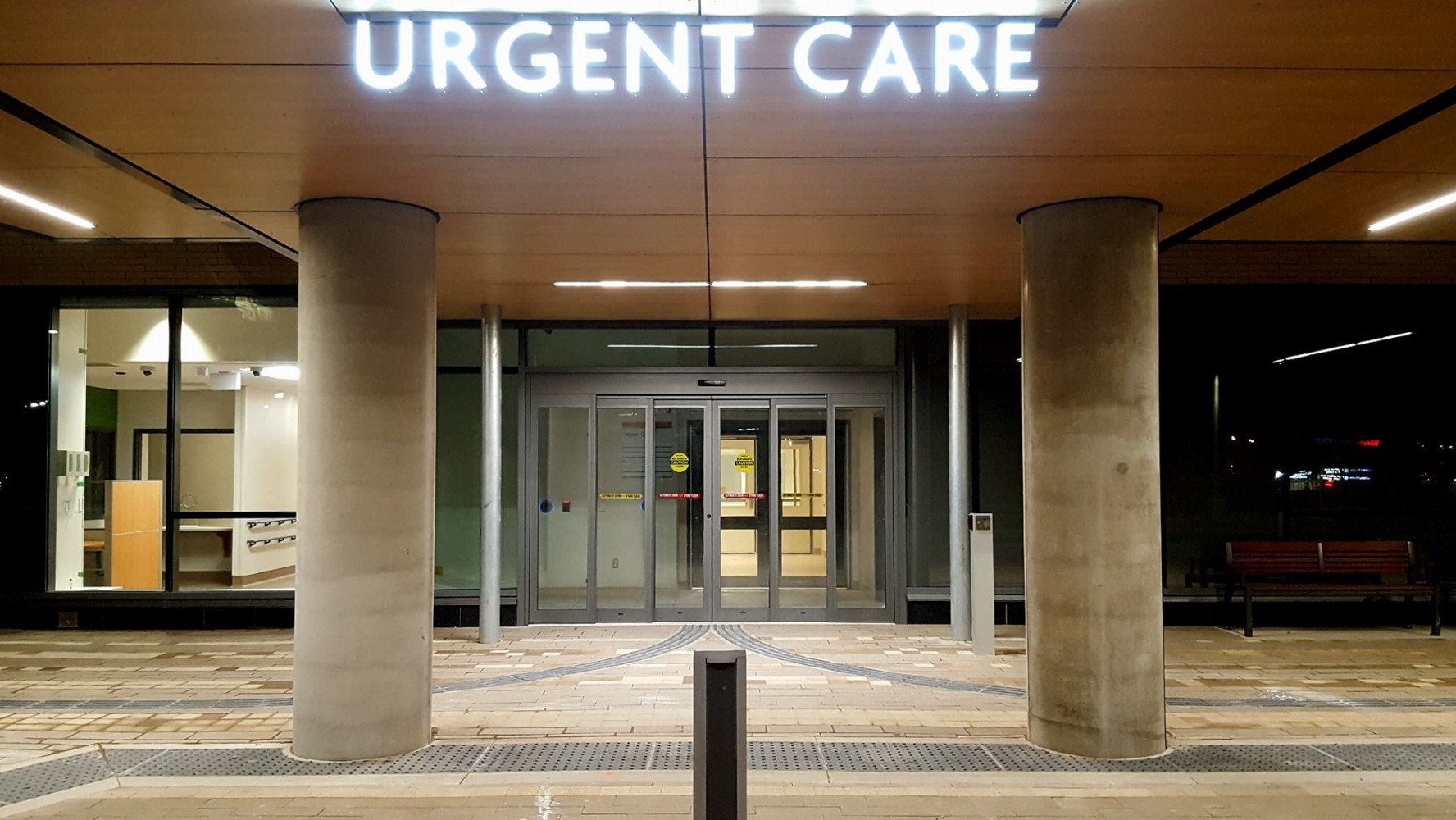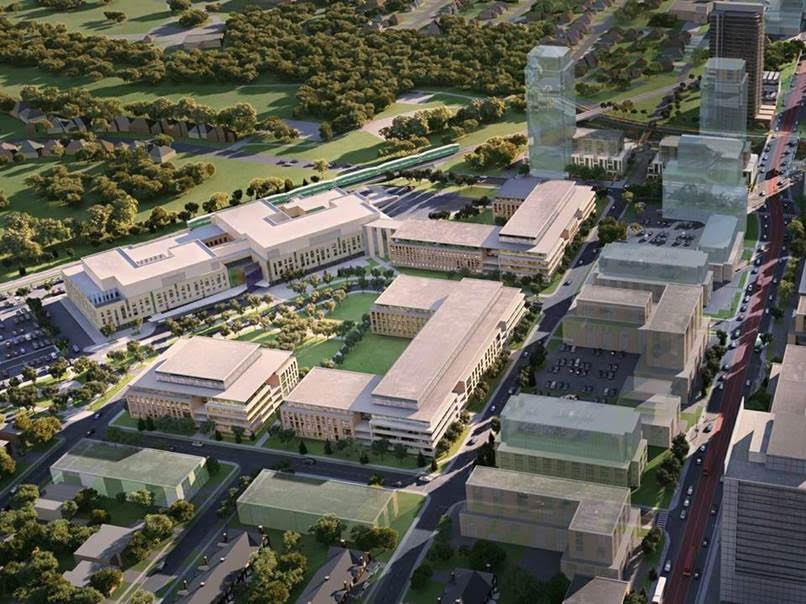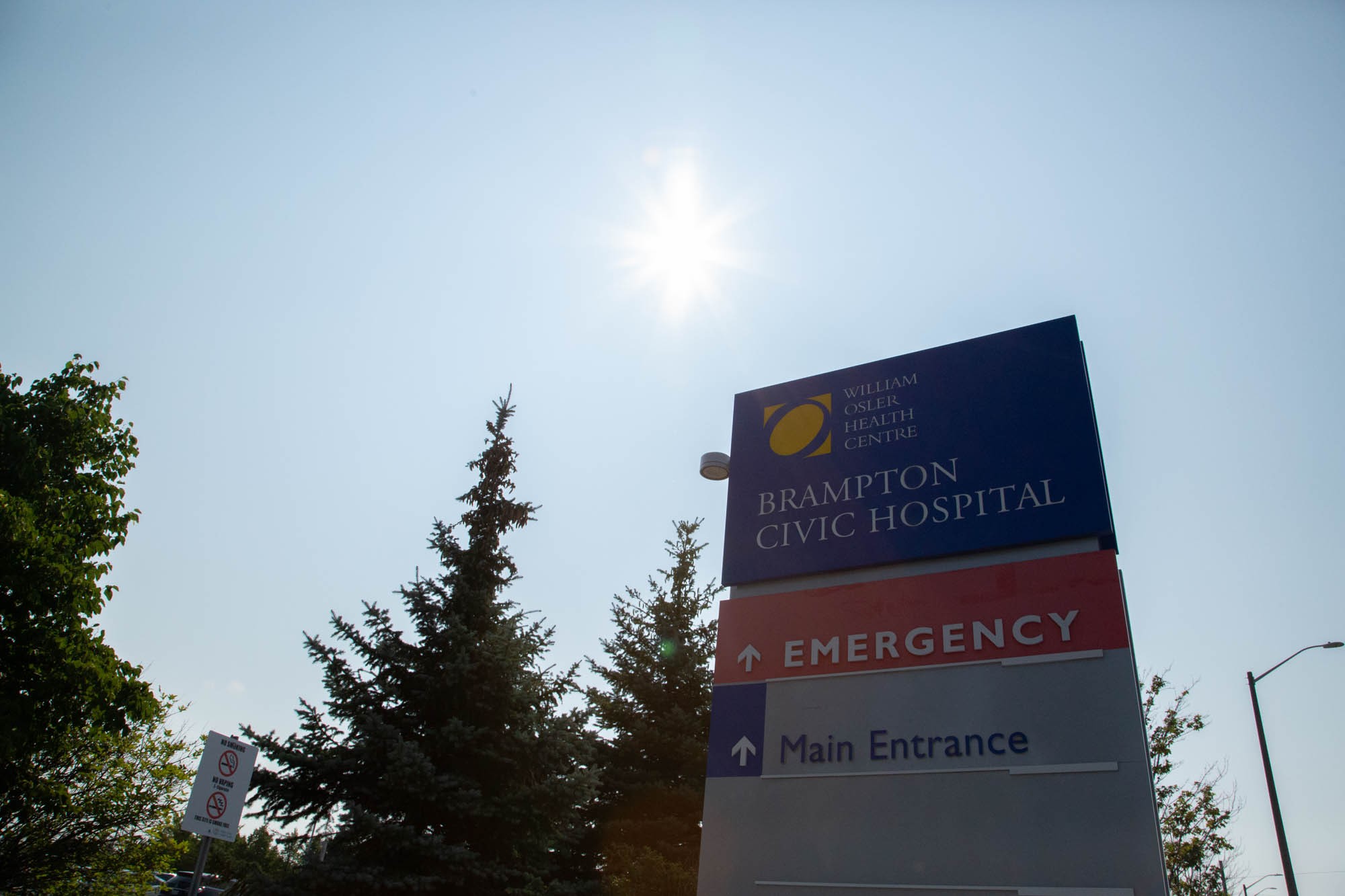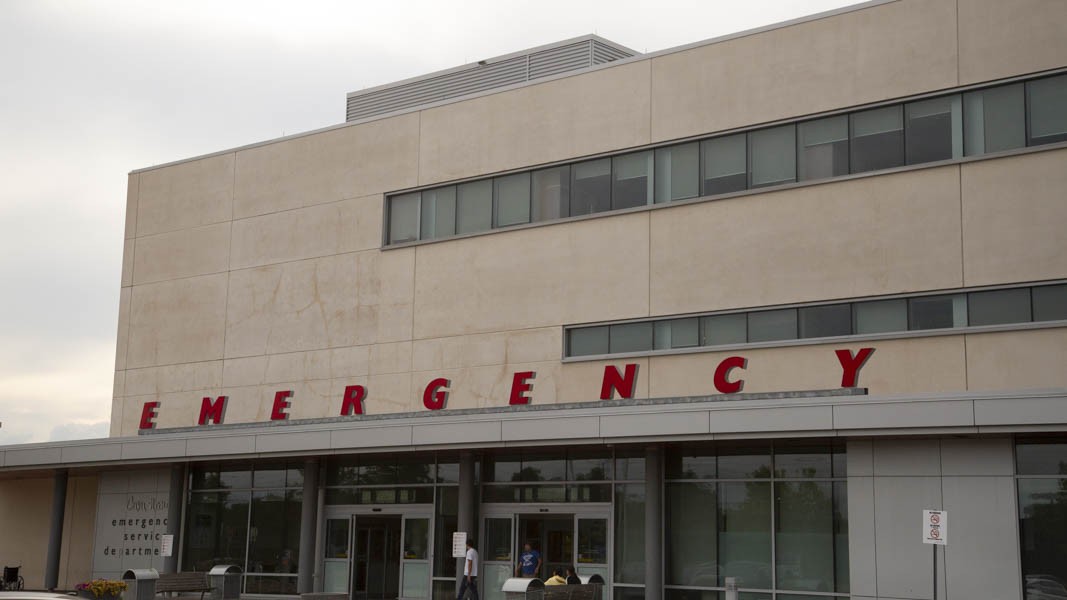
With Osler's Phase II plans falling woefully short, city staff not recommending a hospital levy in 2020
The proposal for the desperately needed Phase-2 expansion of Peel Memorial, and the future of the project have been steeped in confusion for weeks.
City officials were surprised when informed by the province about the local share of project costs, which would be between 20 and 25 percent, more than they expected. Osler initially planned to submit the delayed proposal for Phase II to the province at the end of January, but as The Pointer recently reported, that never happened.

An early rendering of the phased build-out for Peel Memorial
Given this, city staff are recommending not to include a hospital levy in the 2020 budget, even though city council declared a healthcare emergency in Brampton earlier this year, citing its ailing health system as a top priority. The levy would be an additional charge on residential tax bills that would help raise funds for the new hospital.
The city previously had a levy in place, which ended last year, and raised $60 million for Peel Memorial, $40 million for Phase I and $20 million, which is still sitting in city coffers, for Phase II.
During deliberations on Feb. 18 for the 2020 city budget, David Sutton, city treasurer, said that, following discussions with the William Osler Health System, it would be too early to implement the hospital levy.
“Staff recently met with members of the Osler team and it would appear that the scope of their project does not align with recent feedback from council regarding the healthcare need and priorities of the city,” he said. “Additional consultation will need to take place and it may be premature to include a hospital levy in the budget at this time.”
The statement is both encouraging and concerning.
First, the good news is City of Brampton senior staff and council are ensuring that the proposal meets the needs of the city.
According to Chief Administrative Officer David Barrick, very little has been made clear to date.
“They haven’t clearly articulated their specific ask in value proposition,” he said. “In other words, what does the city get in return and…what does the community get in return for the investment in terms of specific number of beds? So, we don’t have that answer yet.”
Mayor Patrick Brown tells The Pointer that of the details shared with him, Osler’s initial proposal for Phase II, which has been in the works for years, only included 200 beds and no emergency department.
“It wasn’t ambitious enough,” he said. “We need a lot more than that.”
City leaders and community advocates have previously called for an additional 850 acute care hospital beds to get Brampton up to the provincial average, as part of the Phase-2 expansion. Currently, Brampton has less than half the number of hospital beds per capita compared to the provincial average and just one third compared to the national average.
Osler has been unable to provide a firm number for Phase II. In a previous interview with The Pointer, Dr. Naveed Mohammad, executive vice president, quality, medical and academic affairs at William Osler said additional beds will be part of the proposal, but he’s not sure what the final number will be as it depends on several factors, including the size of the overall downtown property and the capacity of traffic that's allowed in the area, just east of the city centre.
The desperately needed Phase-2 expansion of Peel Memorial follows years of neglecting an ailing system. The Central West Local Health Integration Network (LHIN), which includes the City of Brampton, along with Caledon, Bolton, Dufferin County, parts of north Toronto, Malton and Woodbridge, is currently receiving approximately $973 of annual funding per capita, the lowest amount in Ontario, and $1,000 less than the provincial average, creating significant strain on the city’s emergency departments and other frontline health services.

Brampton Civic, the city’s lone full-service hospital, was operating at 101 percent to 106 percent capacity for all of 2019, well beyond the recommended standard of care of 85 percent capacity, according to data obtained by the provincial NDP in the fall of 2019. Peel Memorial, the city’s preventative-care facility, which opened in 2017 with the intention of relieving the increasing patient burden experienced at Brampton Civic, started the year operating at 557 percent capacity, a number that increased to 587 percent in April and continued into June. The preventative care facility has no in-patient beds and its urgent care department is open 8 a.m. to 9 p.m. every day.
The dire situation at Brampton Civic’s emergency department has led to some egregious wait times, making the city the poster child for the province’s hallway healthcare.
The provincial target for people to be admitted to the hospital from the ER is 8 hours. In 2019, only 24 percent of patients received by Brampton Civic were admitted in this timeframe. In comparison, admission time is between 3.8 and 4.6 hours at the top five performing hospitals in Ontario. This means the majority of patients who walk through the doors of Brampton Civic’s ER spend four to five times longer waiting for admission than the best performing hospitals and two-and-a-half times longer than the provincial target.
Phase-2 expansion of Peel Memorial would help alleviate pressure at Brampton Civic, but the funding question continues to loom over the process.
Mayor Brown says he’s certain that even with $20 million set aside, Osler will soon put in a request with the city for further funds.
“We signed an agreement for what our contributions would be for Phase I and Phase II. We anticipate the hospital is going to say we need to amend that agreement to mean they are going to need more for Phase II. That request is going to come, and we’re prepared for it, but it hasn’t come yet,” he said.
Previously, Brown said the “gigantic” price tag for the expansion being requested by the province is “in the range of 25 percent.” It’s not clear if this request is above the provincial norm.
The local contribution — dollars which will need to come from the municipality and Osler — sits at approximately 20 percent, including 10 percent of capital construction costs as well as things like furnishings, and specialized equipment that is not covered by the province, according to the Ministry of Health.
“The ministry will fund 90 percent of the eligible construction/capital costs and 100 percent of eligible planning, design, financing and transaction costs. Funding of both the remaining 10 percent of all eligible project costs and any costs not eligible for ministry funding are the financial responsibility of the hospital,” says David Jensen, a spokesperson for the Ministry of Health. “The costs for which a hospital is responsible are otherwise known as the local share and can fluctuate from project-to-project depending on the scope. Where a hospital chooses to add non-sharable costs, the local share will increase accordingly. Municipalities may choose to support hospitals by contributing to the hospital’s local share; however, there is no set guideline on how much a municipality is expected to contribute.”

A hospital levy is one option to raise money, and Mayor Brown previously signalled this could be an option for the 2020 budget. However, no levy is included in the 2020 budget at this time, which proposes a minimal tax increase for local ratepayers.
According to Brown, the city is unable to implement a hospital levy until a new agreement is signed with Osler to amend the initial Memorandum of Understanding between the two organizations for the funding of Peel Memorial construction.
“I’m encouraged that city staff have put the brakes on to what would have been a very flawed William Osler proposal, but I think there should be some money allocated or some kind of levy initiated because we’re going to need more than $20 million,” said Chris Bejnar, co-founder of Citizens For a Better Brampton, which has long advocated for proper healthcare in the city. “I see both sides though, without a concrete number, without any kind of estimate, it’s kind of hard to push a levy through, and then having to come back again for another levy (if the project costs more).”
Bejnar believes that if a levy was to be implemented, many Brampton residents would be okay with such a charge if it meant improved healthcare.
“I think that most people would agree that a second hospital is desperately needed and that if we are to see a half-point increase on our property taxes and we know that’s going strictly for the hospital, I think most people would be okay with it,” he said.
However, the results of a tele-town hall held Tuesday evening suggest that Brampton residents may be torn on the implementation of such a levy.
According to Brown, of the more than 7,000 residents who took part in the tele-town hall budget discussion, when asked whether or not they were in favour of the city implementing a hospital levy in 2021, 58 percent said no while 42 percent said yes.
“I think we’ve got our homework to do, we’ve got to show more of a business case. I think a lot of people don’t understand what Phase II means,” Brown said. “I think people are sort of frustrated how much of it is falling on the backs of municipalities.”
According to Cara Francis, spokesperson for William Osler, the proposal is scheduled to be submitted next month.
“Osler has been working with the Ministry of Health and the City of Brampton to best reflect the needs of the community in its proposal,” she said in an emailed response. “These projects require significant planning and approvals. We are nearing completion on our end and anticipate a final proposal to be submitted in March.”
Osler told The Pointer the proposal for Phase II would be submitted at the end of January, but as Dr. Mohammad previously said, these timelines are unclear.
This follows a response from the province to The Pointer last year, revealing it expected the proposal back in the fall. Under the previous Liberal government, Osler was given $500,000 two years ago to create the proposal. It’s unclear why the process in Osler’s hands has been delayed.
Members of the public have also voiced frustration that they have not been consulted by Osler for the plan, considering the health system relies on Brampton residents and taxpayers to help raise funds for local projects. City taxpayers have already contributed $20 million for the Phase-2 expansion through a levy, with the money losing value the longer the project is delayed.
Initially, Dr. Mohammad said “it’s going to be a few more days,” when asked about submission for the crucial proposal. Later in the interview, he said community engagement for the project will proceed through the winter and spring of 2020 to ensure a solid proposal is developed that addresses all community needs so that another plan won’t be required in the short-term.
With the new March submission date, whether community consultation will be part of the process remains unclear. A request sent to Osler for clarification on the matter was not returned ahead of publication.
Email: [email protected]
Twitter: @JoeljWittnebel
Submit a correction about this story


